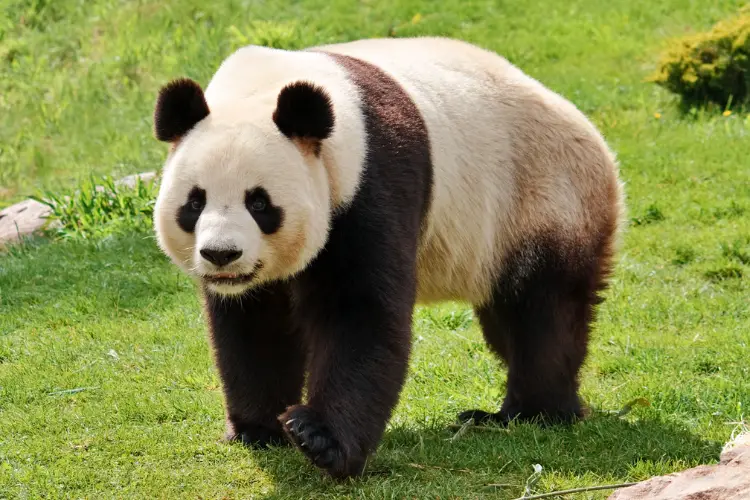A keen sense of smell provides mammals with immense evolutionary advantages. Olfaction aids essential behaviors like finding food and mates, sensing predators, navigating diverse habitats, and communicating with others.
Smell results from airborne molecules triggering nerve cell receptors. The more receptors an animal has, the better it can detect subtle scents. The mammals in this article possess astonishing olfactory prowess thanks to massive receptor genes and brain structures for processing smells.
In this blog post, we will discuss and discover 10 mammals with the most refined sniffers evolution has produced!
1. African Elephant
Renowned for their impressive tusks and remarkable memories, elephants also boast outstanding smell. Their trunks contain over 4 million odor receptors—double what dogs possess. Elephants rely on scent to find dispersed foods and water sources across wide-ranging seasonal movements. They smell fellow herd members up to 2.5 miles away and discern kin from strangers using just scent cues.
Males catch wind-borne signals advertising females’ fertility while in yearly estrus. African elephants even sniff out underground water reserves during drought by pressing trunks flat against dry riverbeds.
2. Giant Panda

These solitary bamboo-eating bears inhabit remote mountain forests in western China. Though seemingly adorable and unassuming, giant pandas have a refined sense of smell that aids their unique lifestyle.
Their rounded black ears and black eye patches focus scents into specialized olfactory bulbs within an unusually large brain region devoted to analyzing smells. Pandas smell fellow bears from nearly a mile away. Their excellent scenting abilities help locate scattered bamboo as well as potential mates during the spring mating season.
3. Domestic Dog
Dogs enjoy richly deserved renown for their superior sense of smell, with over 1 billion scent receptors compared to 5 million in humans. Selective breeding of dogs over millennia for scenthound talents has further refined certain breeds’ sniffing capabilities.
Bloodhounds boast the most smell receptors—up to 300 million! Their elaborate ears help waft odors towards nostrils while loose jowls trap scents near the nose. Some dog breeds can sniff out cancer in blood samples, alert diabetics to blood sugar changes, detect airport explosives or find people buried by avalanches using just their legendary noses.
4. Rats and Mice
While rarely beloved, rats and mice have remarkable scent abilities thanks to genes encoding over 1,000 different smell receptors compared to 800 in humans. Outsized olfactory bulbs behind their prominent twitching snouts analyze reams of smelly stimuli.
Mice and rats constantly sniff air currents carrying information about predators, territories, prospective mates and the locations of tasty foods including distant caches. Superior scenting gives these small but supremely successful mammals major advantages across habitats worldwide.
5. Cat
Cats are famously finicky eaters that carefully sniff potential foods. Their sense of smell likely stems from a crucial survival adaptation: stalking wary prey under cover of night while tracking erratic movements using scent, faint sounds, and exquisite whisker senses without relying much on vision.
Cats possess around 200 million scent receptors—modest compared to dogs but still 14 times more than people have. Tigers also have an acute sense of smell to track prey as well as sense other tigers’ territories crossed by intruding rivals.
6. Grizzly Bear

The most feared predators in North America’s wilderness, grizzly bears have a standout sense of smell that aids their hunting and foraging. They sniff out bison carcasses from over 3 miles away across open plains. And locate freshly dead salmon washed up along stream banks from 1.5 miles off.
Their long snouts have over 100 million receptors, especially attuned to social signals. Males follow females in estrus for weeks, while mothers memorize each cub’s unique scent at birth for later recognition even from hundreds of yards away.
7. Moose
As the world’s largest deer species, moose rely on acute smell and hearing more than eyesight when foraging through northern woodlands. Their long snouts have eight times more scent receptors than people’s noses.
Bulls sniff out estrous females from miles away during fall breeding season thanks to pheromones wafting upon the breeze. Cows memorize newborns’ scent at birth, later locating them by smell even if separated. Moose also smell water sources buried under snowpack during northern winters.
8. White Shark
More commonly known as great white sharks, these apex ocean predators have a very acute olfactory sense. Hundreds of smell receptors along their snouts pick up tiny concentrations of organic compounds up to half a mile away that signal injured animals or potential prey like seals around offshore rocks.
White sharks get agitated by whale blood from remarkable distances thanks to specialized cells that funnel scents straight to the nose. They also sniff out prospective mates based on pheromones when widely dispersed across ocean habitats.
9. Salmon

Renowned for navigating across vast oceans then returning hundreds of miles inland to spawn in the exact streams of their birth, salmon memorably achieve these feats through spectacular olfactory capabilities.
Hundreds of large receptor genes give salmon among vertebrates’ most advanced capacity to process environmental smells. Adults migrating upstream sniff out characteristic odors emanating from each river and stream to identify their home tributary. Young salmon imprint on local water scents for several years to aid their later homing journeys as returning adults.
10. Turkey Vulture
An iconic scavenging bird across the Americas, turkey vultures use legendary smell abilities to quickly discover even well-hidden carcasses. Slit-like nostrils set on bald red heads function like smell receptors.
Ruffled black feathers around the head direct gases towards the nostrils so vultures smell prey like skunk spray from 60 miles away! They smell not only dead animals but also gas leaks across habitats. Turkey vultures circle lower upon detecting scent molecules of digestive mercaptans emitted as deceased flesh decays.
Conclusion
For the mammals and birds described here, advanced olfactory abilities provide immense evolutionary advantages locating dispersed food, avoiding dangers, connecting with mates, navigating across vast distances and communicating in other essential ways.
Intricate scent detection relies on specialized receptor cells and brain structures for processing smells. But for animals equipped with extraordinary sniffers like elephants, bears, sharks and turkey vultures, spectacular olfaction grants unique mastery over the many opportunities—and perils—the natural landscapes they inhabit present.


